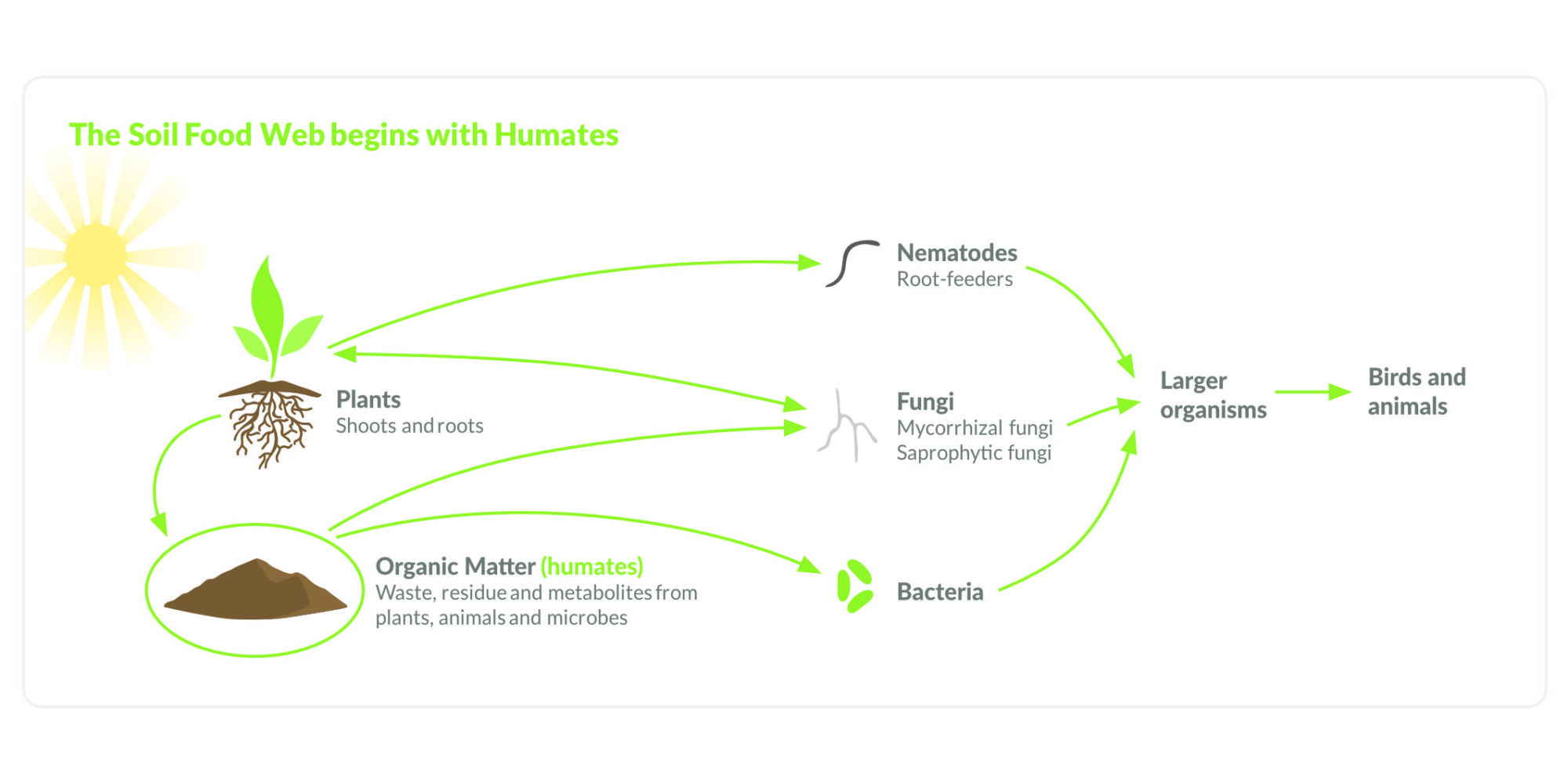
Humate materials are widely distributed organic carbon containing compounds found in soils, fresh water, and oceans. These substances are formed from the biological and chemical breakdown of animal and plant life, and make up approximately 75 percent of the organic matter that exists in most mineral soils.
Humate is the purest form of natural organic matter known to man and it is one of the most complex substances on planet. Humate is highly concentrated into a solid material, similar to coal. Humate is the generic name for soil humic substances. Humic acid is the chemical properties of humate. Humate and humic acid are basically one in the same. Humate is essential to life…for humans, animals and all the plants on this planet.
Between 65 to 100 million years ago the planet enjoyed optimum organic growing conditions. The vegetation was extremely lush and abundant, as is evidenced by ancient remains that geologists call humic deposits.
These plants were super rich with nutrients and minerals because of the high oxygen content of the air. These super plants produced the abundant food in massive quantities capable of feeding the dinosaurs for millions of years. These power-packed vegetation crops and massive dinosaurs met their extinction and were covered by ash.
They decomposed for millions of years passing on their vitality of life to future generations through these ancient compost heaps. These decomposed bogs were compressed into nature’s most concentrated source of humic acids.

Humate is the sum total of this ancient organic matter disassembled by nature’s brilliant decomposition and recycling processes, then highly refined by millions of species of beneficial soil-based microorganisms. Ultimately, microscopic plants such as yeast, algae, mold, fungi, etc., finish up the process. These tiny beneficial plants refine, purify, combine, and re-refine, until tons of once-living matter are converted to pounds and ounces.
Yet miraculously, when all is said and done the end product is transformed into the world’s most complex and ultra-compact molecules. Even the nucleic acids (RNA and NDA) of the earlier life-forms remain intact. The molecules are ultra-condensed and highly functional, rolled up into tight little balls that are supercharged biochemical and phytochemical power plants, similar to storage batteries or fuel cells.As the plant and animal matter decomposes, peat is created first, then humate, lignite and, eventually, coal.
There are various types of humates depending on geographic location, origin material, and degree of decomposition. There are not very many high quality sources of humate within Australia and New Zealand that contain good levels of carbon, humic and fulvic acids. Southern Humates sourced from Wyndham, Southland is found to be high in humic acid.
Want to keep learning about Humate and its benefits?
Read another page


Mobile: 027 573 5312
E-Mail: dave@southernhumates.co.nz



